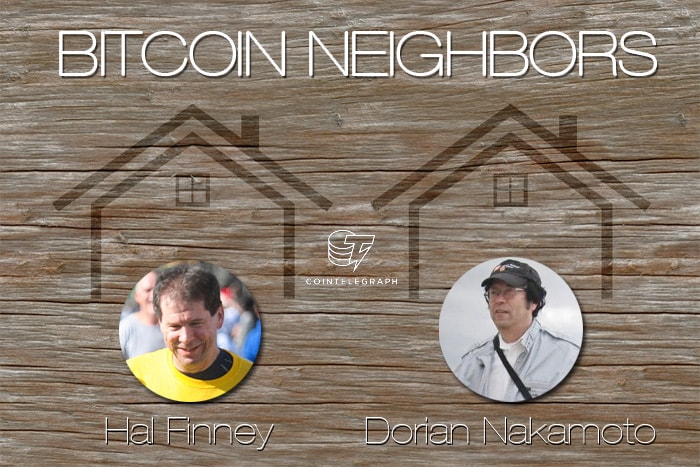The investigations and detective games are currently focusing on two main matters in the cryptographic world – the Bitcoins lost by Mt.Gox and the identity of Satoshi Nakamoto, the inventor of the most successful virtual currency. The former succeeded in putting the brakes on the search for the father of the praised technology for some time, but the most ambitious researchers among journalists, developers and users have certainly not abandoned the idea.
On the 25th of March, Andy Greenberg provided his readers on Forbes with evidence that could lead him to the headspring of cryptography. His assumptions have brought him to the doorstep of Hal Finney in Santa Barbara. The cryptographic genius is 57 years old and is suffering from ALS or amyotrophic lateral sclerosis although he is still capable of answering even the most complicated of questions.
A Mastermind Has No Limits
It is likely that the average reader has never heard of him. While he was healthy, Hal Finney worked on the basics of cryptography and had plans to start his own virtual currency. Mot developers and IT specialists are probably familiar with one of his projects: the creation of the 2.0 version of PGP or Pretty Good Privacy as part of Phil Zimmermann’s team.
Despite his current conditions, Mr. Finney’s mind has not lost its abilities. Anyone can communicate with him using special equipment. He uses his eyes to manipulate voice synthesis software installed on a PC on his wheelchair. Sometimes he reveals his mood or thought with a smile.
His wife, Fran, and son, Jason, have been caring, loving, and supportive. They have been pleading for the press to not bother them at their home. The have reassured that their husband and father holds no secrets.
Milestones of Success
Hal Finney has shown interest and extraordinary mathematical abilities during his college days. He has honed his talent and gained experience from various projects, however, it was PGP that set the basics of cryptography. He also provided practical implementation of his scientific research, integrated a solution in the so-called “remailers” and created a prototype of modern digital currencies by developing a “proof-of-work” system.
In 1993 Finney wrote:
“With digital cash and smart cards, you should be able to engage in…transactions with no organization or institution able to violate your privacy or steal your money. You can protect yourself, rather than having to trust others. This puts more power into the hands of the consumer.”
In 2009 he became aware of the presence of Bitcoin and established a contact with Satoshi Nakamoto. The scientist has provided the mysterious father of Bitcoin with feedback and advice for improvement. The first transaction ever was performed among the two as they were the first miners. Later, the mined coins were sold at a price of 100 dollars per BTC to pay for medical treatment.
Mr. Finney rejects the hypothesis that he is Satoshi Nakamoto and has no proof that Dorian Nakamoto is the inventor.
Strong Evidence
Andy Greenberg has ordered a test to compare the writings of Mr.Finney with some texts belonging to Satoshi Nakamoto. Experts have noted many similarities, which, however, is still not enough to draw any definitive conclusions.
Although the first meeting with Hal Finney left some room for doubt, he was able to provide the journalist with additional information during the second meeting. He shared his correspondence with Satoshi Nakamoto. These letters show even more in common with the language and writing manner of Satoshi after analysis.
Hal Finney also composed a text answering most of the questions from the press. Cointelegraph reprints it with no alterations:
“I must be brief. The reason I was skeptical about Dorian Nakamoto is that he didn’t match the picture in my mind that I had of Satoshi. I pictured him younger, as he was giving the impression of youthful vigor. Then there is the language Bitcoin was written in, C++. Satoshi was a master of the intricacies, and I’ve only seen this in young programmers. It seems hard to master C++ if you didn’t learn it while you’re young. As I have learned more about him, there are details that don’t add up, such as his care for an aging mother, which might cause financial strain.
As for your suspicion that I either am or at least helped Satoshi, I’m flattered but I deny categorically these allegations. I don’t know what more I can say. You have records of how I reacted to the announcement of Bitcoin, and I struggled to understand it. I suppose you could retort that I was able to fake it, but I don’t know what I can say to that. I’ve done some changes to the Bitcoin code, and my style is completely different from Satoshi’s. I program in C, which is compatible with C++, but I don’t understand the tricks that Satoshi used.
As far as your theory that I knew Dorian, that is unlikely because I lived in Temple City more than a decade ago, when Bitcoin hadn’t even been dreamed up. Again, I categorically deny any familiarity with Dorian Nakamoto.”
Looking back on the story told by Andy Greenberg, the Cointelegraph would like to congratulate him on a very noteworthy deed. The pursuit of Satoshi Nakamoto‘s true identity has turned into an heart-warming tribute to a great scientist and visionary, Hal Finney, who has contributed so much to the world of cryptography.
